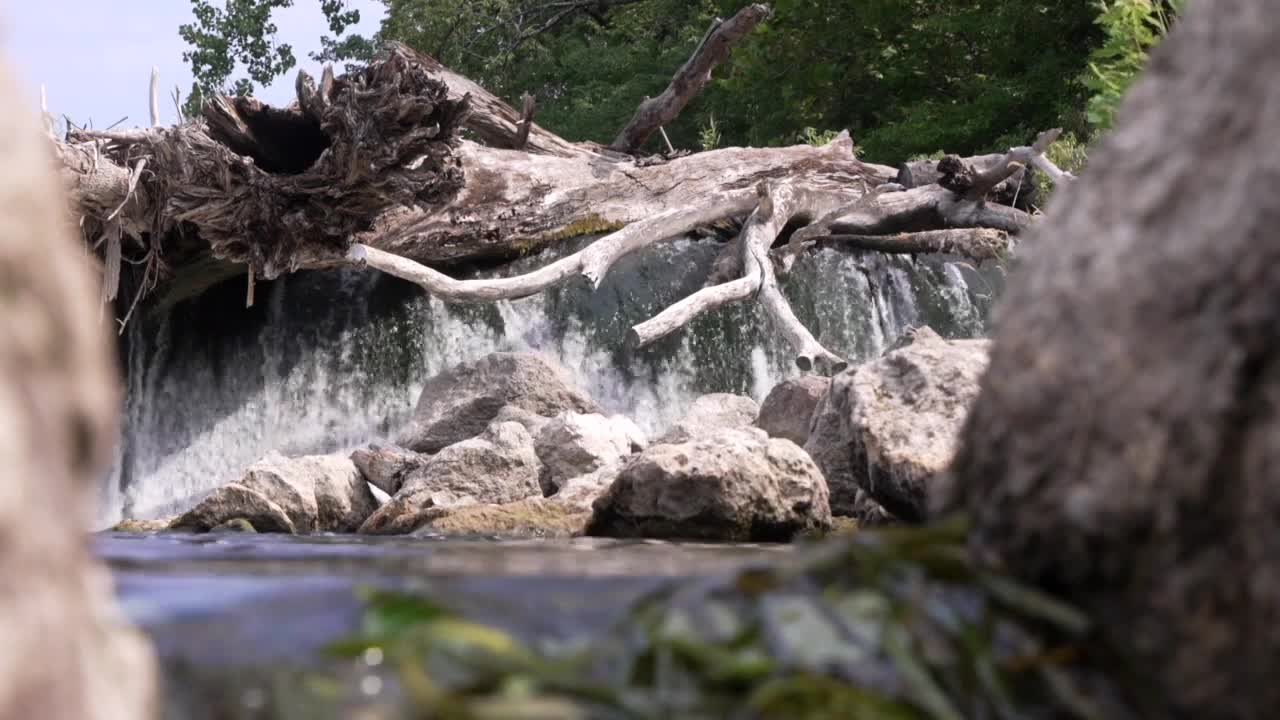GRAND RAPIDS, Mich. — The dams in downtown Grand Rapids play defense, stopping the invasive sea lamprey from slithering further up the Grand River to spawn.
Soon enough, though, the dams will be dismantled as part of the Restore the Rapids project, leaving the river and its thousands of miles of tributaries vulnerable to the Vampire of the Great Lakes.
"Everything is interconnected," said Ethan Baker, chair of the Great Lakes Fishery Commission. "Some of the best intentions can create additional problems."
The Great Lakes Fishery Commission, from the beginning of this project, has worked with Grand Rapids Whitewater (GRWW) and the City of Grand Rapids to determine how to responsibly remove the dams and restore the natural flow of water without compromising the ecology of the river.
Recently, the commission received a $2.1 million grant from the federal government to, among other items, design a new sea lamprey barrier.

"A huge, huge endeavor and well worth the money spent," Baker said.
The barrier could work similarly to FishPass, a still-under-construction project on the Boardman River in Traverse City that selectively allows native, desirable fish to swim though while blocking invasive species like sea lamprey.
"It will certainly be state-of-the-art, technology-driven and research-driven," Baker said. "We'll get the best bang for our buck."

Michigan
THE FISH THIEF: Documentary tells the story of sea lamprey on the Great Lakes
Baker says estimates for the cost of designing and constructing the barrier are around $30 million, but adds its presence near the Sixth Street Bridge on the Grand River will save the commission, which is publicly funded, around $2 million a year in sea lamprey control efforts.
"We believe the project will pay for itself at a certain point," he said.
The grant is also representative of a "turnaround" in the commission's relationship with the federal government.

Michigan
SEA LAMPREY: USFWS to rehire fired workers after federal judge's ruling
In February, a number of U.S Fish and Wildlife Service workers, contracted by commission, were fired by the Trump administration, which also put in place a hiring freeze and a spending limit on government-issued travel cards.
The downsizing, Baker said at the time, would have cost the United States $800 to $900 million dollars "in the first year alone," as the commission would not have been able to control sea lamprey populations on the Great Lakes.
In March, though, the Trump administration — and a ruling from a federal judge — reversed the cuts.
"To be quite frank, the Trump administration has come on board, certainly, with an understanding of the issues we face at the Great Lakes Fishery Commission," Baker said. "I think that has helped tremendously."
READ MORE: Suckers left for dead on the banks of the Grand River, zoo talks fish misconceptions
Despite a late start to the commission's summer sea lamprey control efforts, Baker says it's "right back on track.
"I would definitely say things are in a much better place than they were," he said.






